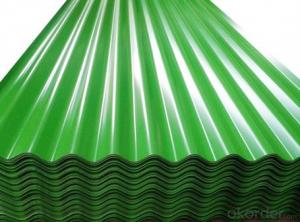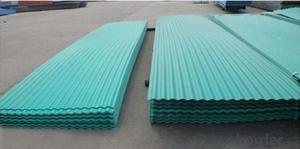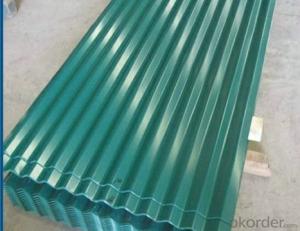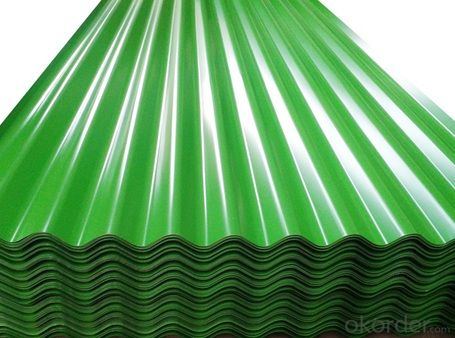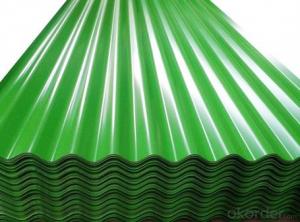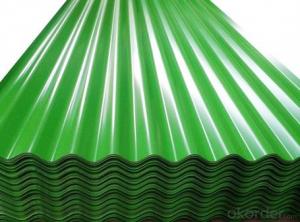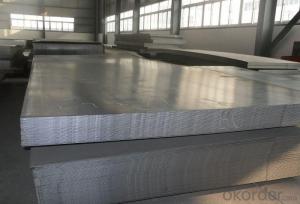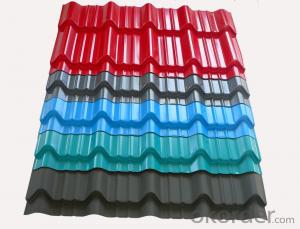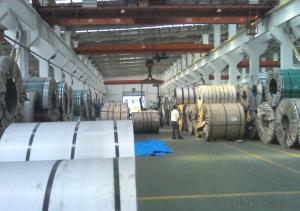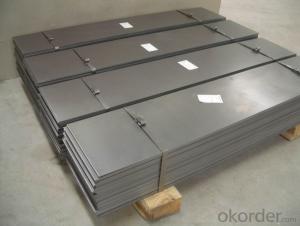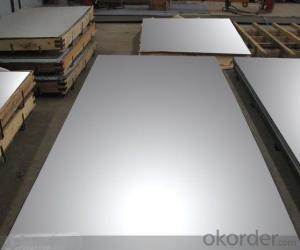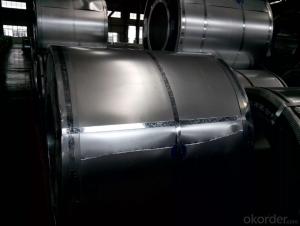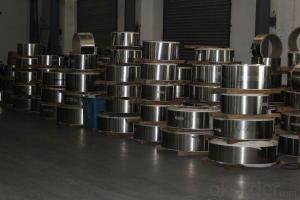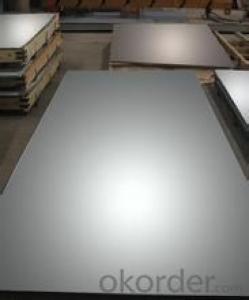Premium Green Colored Corrugated Roofing Metal Sheet
- Loading Port:
- Tianjin
- Payment Terms:
- TT OR LC
- Min Order Qty:
- 25 m.t.
- Supply Capability:
- 2000 m.t./month
OKorder Service Pledge
OKorder Financial Service
You Might Also Like
Specification
Product Brief Introduction
Premium Green Colored Corrugated Roofing Metal Sheet
--- Corrosion resistance: Pre-coated steel offers excellent corrosion resistance achived through continuous hot DIP galvanization and corrosion resistant primer/polyester coating. Protection is achieved when zinc and steel are together in the presence of moisture; The zinc protects the steel by galvanic action
Product Specification
Standard:ASTM, GB,JIS,JIS G3302 ASTM 755 EN10169
Grade: DX51D CGCC CS
Thickness: 0.13mm~3.0mm,
Width: 1250,600-1250mm
Chemical composition:
C | Si | Mn | Cr | Ni | P | S |
0.150 | 0.476 | 11.231 | 12.50 | 0.900 | 0.039 | 0.010
|
FAQ
How long will we receive the goods ?
45days after receiving workable L/C
2. how do you control the quality ?
we have our own quality control department ,we will arrange QC person to see the production line ,when goods finish ,before shipment ,our QC person will check the quality as per our test report request ,if the goods is ok ,then we issue the test report ,and we allow the goods shipping ,otherwise will not allow ship the goods.
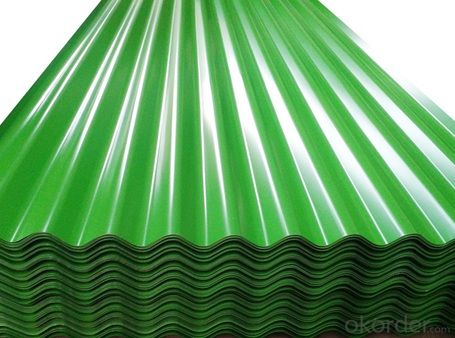
- Q: Are steel strips suitable for making architectural façades?
- Architectural façades can be effectively constructed using steel strips. Steel, a versatile material, offers numerous advantages for façade applications. Firstly, steel strips possess high durability and resistance to environmental factors such as corrosion, moisture, and UV rays. This durability ensures that the façade maintains its aesthetic appeal and structural integrity over time. Moreover, steel strips provide a wide range of design possibilities due to their flexibility and malleability. They can be easily shaped, curved, or perforated to create intricate patterns and textures, enabling architects to achieve unique and visually appealing façade designs. Additionally, steel strips can be coated in various finishes, including powder coating or metallic finishes, further enhancing their aesthetic appeal. Furthermore, steel strips offer an excellent strength-to-weight ratio, making them suitable for large-scale architectural applications. This allows architects to design lightweight façades without compromising on structural stability. Additionally, steel strips can be easily installed and require minimal maintenance, reducing construction and maintenance costs. Another advantage of using steel strips for architectural façades is their sustainability. Steel is a recyclable material, contributing to the overall sustainability of the building. Moreover, steel is an energy-efficient material as it reflects solar radiation, reducing the energy required for cooling the building. In conclusion, steel strips are highly suitable for constructing architectural façades due to their durability, design flexibility, strength-to-weight ratio, ease of installation and maintenance, and sustainability. Architects and designers can utilize steel strips to create visually stunning and functional façades that enhance the overall aesthetics and performance of the building.
- Q: How are steel strips processed for formability?
- Steel strips are processed for formability through various techniques such as annealing, cold rolling, and tempering. Annealing involves heating the steel strip to a specific temperature and then slowly cooling it, which helps to soften the steel and improve its formability. Cold rolling is another method where the steel strip is passed through a series of rollers at room temperature, reducing its thickness and enhancing its ductility. Tempering is also utilized to further improve the formability by reheating the steel strip to a specific temperature and then rapidly cooling it. All these processes help to enhance the formability of steel strips, making them more suitable for shaping and forming into desired products.
- Q: What are the different grades of steel used for making steel strips?
- There are several different grades of steel that are commonly used for making steel strips, each with their own specific properties and characteristics. Some of the most common grades include: 1. Low carbon steel (C1008/C1010): This grade of steel is commonly used for making steel strips due to its excellent formability and weldability. It has a relatively low carbon content, making it softer and more malleable. 2. Medium carbon steel (C1045): This grade of steel has a higher carbon content compared to low carbon steel, making it stronger and more durable. It is commonly used for applications that require higher strength and toughness, such as automotive components. 3. High carbon steel (C1095): This grade of steel has the highest carbon content among the three mentioned. It is extremely strong and hard, making it suitable for applications that require high wear resistance, such as cutting tools and springs. 4. Stainless steel (304/316): Stainless steel is a popular choice for making steel strips due to its excellent corrosion resistance. Grades such as 304 and 316 are commonly used, as they offer a good combination of strength, formability, and resistance to various chemicals and environments. 5. Alloy steel: Alloy steels are made by adding specific alloying elements such as chromium, nickel, or molybdenum to improve their mechanical properties. They are commonly used for making steel strips that require enhanced strength, hardness, and resistance to heat or wear. It is important to note that the specific grade of steel used for making steel strips may vary depending on the intended application and the desired properties of the final product. Manufacturers often choose the appropriate grade based on factors such as strength requirements, corrosion resistance, formability, and cost considerations.
- Q: What are the main factors affecting the magnetic properties of steel strips?
- The main factors affecting the magnetic properties of steel strips include the composition of the steel, the heat treatment process, the presence of impurities or alloying elements, the grain size and orientation, and the magnetic field intensity applied during processing.
- Q: How do steel strips perform in load-bearing applications?
- Steel strips perform exceptionally well in load-bearing applications due to their high strength and durability. They can withstand heavy loads and distribute them evenly, providing structural stability and support. Additionally, steel strips have excellent resistance to wear, corrosion, and impact, making them suitable for various load-bearing purposes, such as construction, automotive, and manufacturing industries.
- Q: How do steel strips perform in terms of sound insulation?
- Steel strips are not effective in terms of sound insulation as they have poor sound absorption properties.
- Q: Can steel strips be used in the manufacturing of power transmission components?
- Yes, steel strips can be used in the manufacturing of power transmission components. Steel strips are commonly used in the production of various power transmission components such as gears, shafts, couplings, and bearings. Steel strips offer high strength and durability, making them suitable for withstanding the heavy loads and high torque involved in power transmission applications. Additionally, steel strips can be easily molded, machined, and heat-treated to meet the specific requirements of power transmission components. The use of steel strips in manufacturing power transmission components ensures they have the necessary mechanical properties to efficiently transfer power and withstand the demanding operating conditions in various industries, including automotive, aerospace, and manufacturing.
- Q: How do steel strips perform in high-pressure environments?
- Steel strips perform well in high-pressure environments due to their inherent strength and durability. They can withstand the force exerted by the pressure without deforming or breaking, making them suitable for various applications such as pipelines, pressure vessels, and hydraulic systems. Additionally, steel's resistance to corrosion ensures its performance remains unaffected even in harsh conditions.
- Q: What are the properties of high-strength steel strips?
- High-strength steel strips possess several properties that make them desirable for various applications. Firstly, they have a high tensile strength, which means they can withstand significant amounts of tension or stretching without breaking or deforming. This property makes them suitable for use in structural components and load-bearing applications where strength is critical. Additionally, high-strength steel strips exhibit excellent hardness, which allows them to resist wear and abrasion. This makes them ideal for use in industries such as automotive and machinery, where components may encounter friction or contact with other surfaces. Furthermore, these steel strips often have good formability, meaning they can be easily shaped or bent into complex forms without losing their structural integrity. This property is crucial for manufacturing processes such as stamping, forming, and roll forming, where the steel needs to be manipulated into specific shapes. Another important property of high-strength steel strips is their resistance to corrosion. They are often coated or treated with protective layers, such as galvanization or other corrosion-resistant coatings, to prevent rusting and maintain their durability even in harsh environments. Moreover, high-strength steel strips have high yield strength, which refers to their ability to withstand significant amounts of stress before permanent deformation occurs. This property makes them suitable for applications where structural stability is essential, such as in construction and infrastructure projects. Overall, the properties of high-strength steel strips make them a reliable and versatile material for a wide range of applications, providing strength, hardness, formability, corrosion resistance, and yield strength.
- Q: Can steel strips be used in the production of agricultural machinery?
- Yes, steel strips can be used in the production of agricultural machinery. Steel strips are often utilized for various components such as frame structures, blades, cutting edges, and other parts that require high strength and durability. They provide excellent resistance to wear, corrosion, and impact, making them suitable for heavy-duty applications in the agricultural sector.
Send your message to us
Premium Green Colored Corrugated Roofing Metal Sheet
- Loading Port:
- Tianjin
- Payment Terms:
- TT OR LC
- Min Order Qty:
- 25 m.t.
- Supply Capability:
- 2000 m.t./month
OKorder Service Pledge
OKorder Financial Service
Similar products
Hot products
Hot Searches
Related keywords
